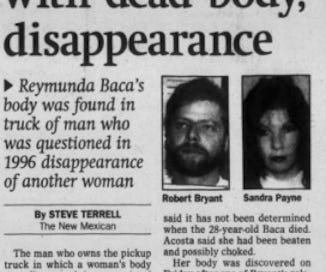Chapter 6: What have you changed your mind about over the years?
Originally written January 25, 2021
Throughout my early adulthood, I was basically a hippie and thus, in general I was against the death penalty – though, to be honest, I didn’t think about the issue all that much.
I remember being happy in 1972 when the U.S. Supreme Court threw out capital punishment statutes in all 50 states. But five years later, after many states began adopting new death penalty laws in line with the high court’s ruling, I remember being sad when Utah murderer Gary Gilmore demanded to be executed – and his state obliged with a firing squad.
No, I wasn’t sad because I had any sympathy or affection for the killer or any doubts about his guilt. I just knew this would open the execution floodgates.
But, as I said, I didn’t think about capital punishment all that much. At least until early 1989 when I began a near-decade-long stint as a crime reporter for the Santa Fe New Mexican. During my years on what my former colleague Ben Neary called “the mayhem beat,” I had to cover some of the most vicious and violent creeps the state has ever known. And my opinion on the death penalty started to make a sharp turn.
Some of those cases still make me shudder.
There was Ricky Abeyta who on Super Bowl Sunday, 1991, killed seven people including two cops and a baby, in an incident that came to be known as the Chimayo Massacre.
There were the Bosque Boys, four Espanola teens who raped and killed a convenience store clerk named Abigail Sanchez in 1993.
There was “Mean” Dean Salazar, who shot and killed his girlfriend Josephine Manzanares that same year. Dean sticks out in my memory because right after his arraignment at Santa Fe County Magistrate Court, he lunged at my photographer who was standing right by me in the court’s parking lot, knocking the camera out of his hands.
One of the very worst was a child killer named Jerome Martinez, a junkie and burglar who broke into a Rio Chama home of Annette Valario and her 9-year-old daughter Venessa. Annette and Venessa returned home one day to find Martinez. Armed with a gun he found in the house, Martinez shot both Valerios. Venessa died.
I became friendly with Venessa’s father Rick during the trial. One day while those proceedings were going on, I had to pick up my daughter, who was about the same age as the victim. I swung by the courthouse, just to make sure nothing important had happened and ran into Rick. I felt almost guilty showing up there with my beautiful little girl while Rick would never be able to see his little girl again.
I think I could have executed Jerome Martinez with my bare hands if offered the opportunity. I certainly didn’t shed any tears for him when the jury found him guilty and imposed a death sentence. And I sure wasn’t upset two years later in 1996 when Martinez died in prison from hepatitis.
But I again changed my mind about the death penalty during closing arguments in the death penalty phase of a murder trial of a monster named Robert Bryant.
Bryant was found guilty of murdering an Albuquerque woman named Reymunda Baca in 1998. (He also was a suspect in the disappearance of a Santa Fe woman, though that case remains unsolved.) The prosecutor was effective during the main trial in laying out the case against Bryant and poking holes in his defense. But during the death penalty hearing, she said something that truly rubbed me wrong.
“Robert Bryant showed no mercy to Reymunda,” she said. “Why should we show any mercy to him?”
My God, I thought. She’s appealing to my inner Robert Bryant!
And I didn’t like that feeling.
This prosecutor wasn’t very artful in presenting that line of thought. But I’ve seen similar arguments expressed by lawyers far more skilled.
And I still don’t buy it, even when the offender is a scumbag like Bryant.
So on that day, more than 20 years ago, I’ve gone back to my original hippie outlook on capital punishment. I was happy in 2009 when the state Legislature finally banned the death penalty and would love to see other states do the same.





Somebody, somewhere has to stand up for grace and mercy.
It's a hard calculus. You were up close to brutal murders, and I might have changed my mind as well. When my father was robbed and murdered in rural OKC in 1980, I remained in the no-death-penalty camp. The killer served only twelve years, and I've seen his current shack, near Luther, on Google. I think he had previously murdered someone in New Mexico at a rest stop. He got off too easy. But life in prison without parole is probably worse than death. In any case, the Innocence Project, for which a criminal defense lawyer friend in ABQ worked for many years, has freed many innocent prisoners. Almost a hundred people later proven to be innocent have been executed. That's the main reason I stay in the camp you've finally chosen. This is an excellent Substack post, Steve.